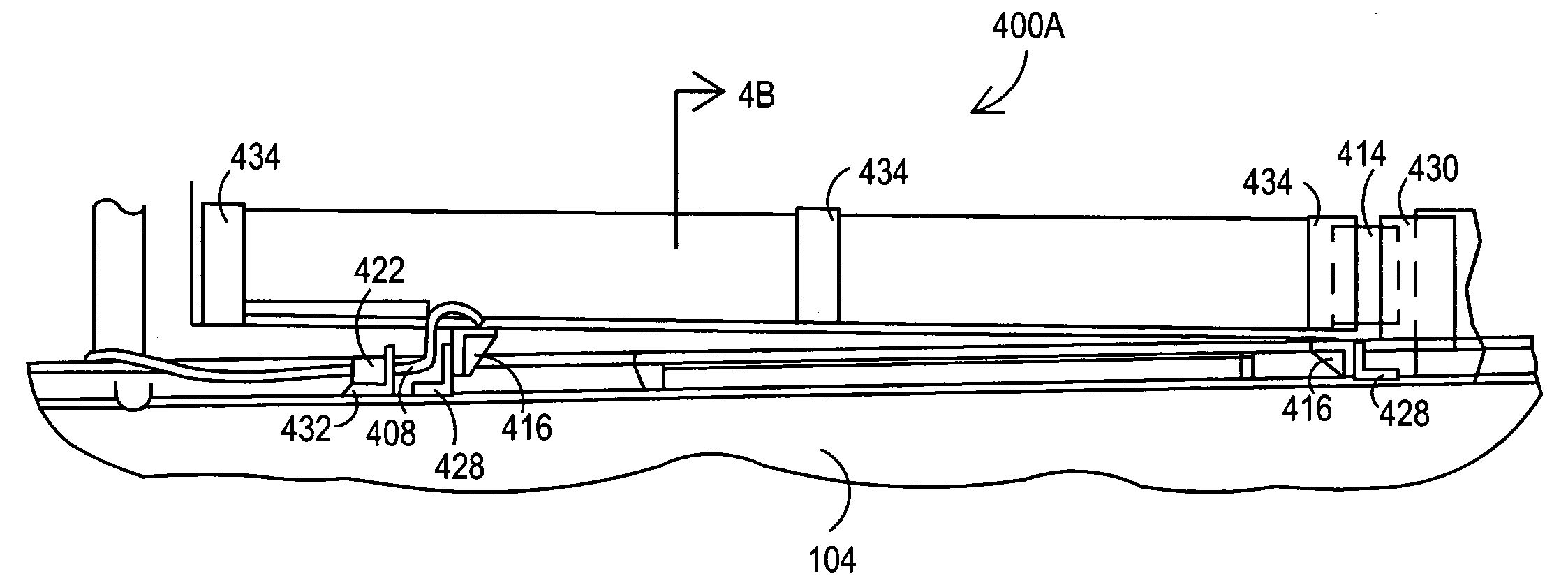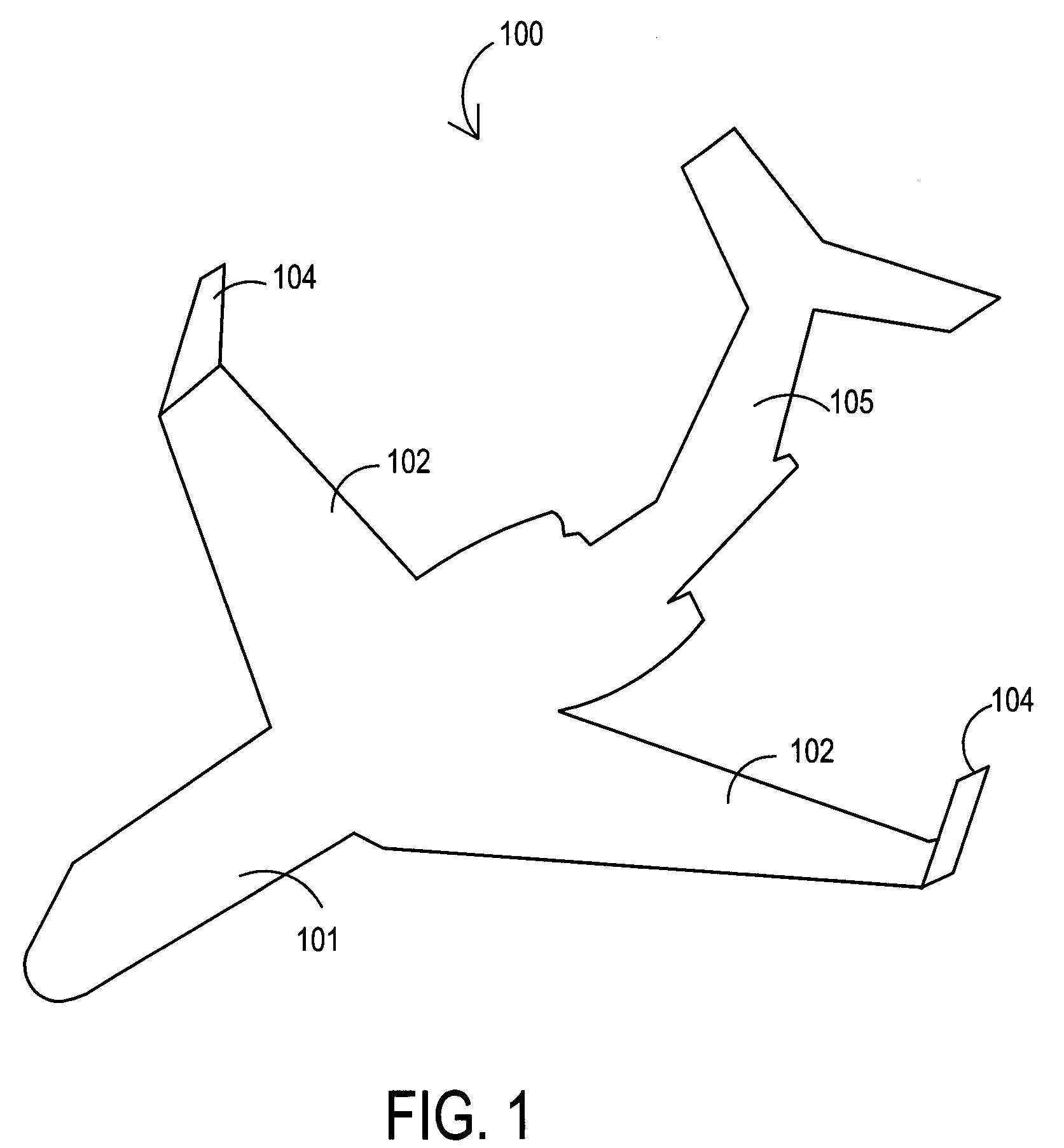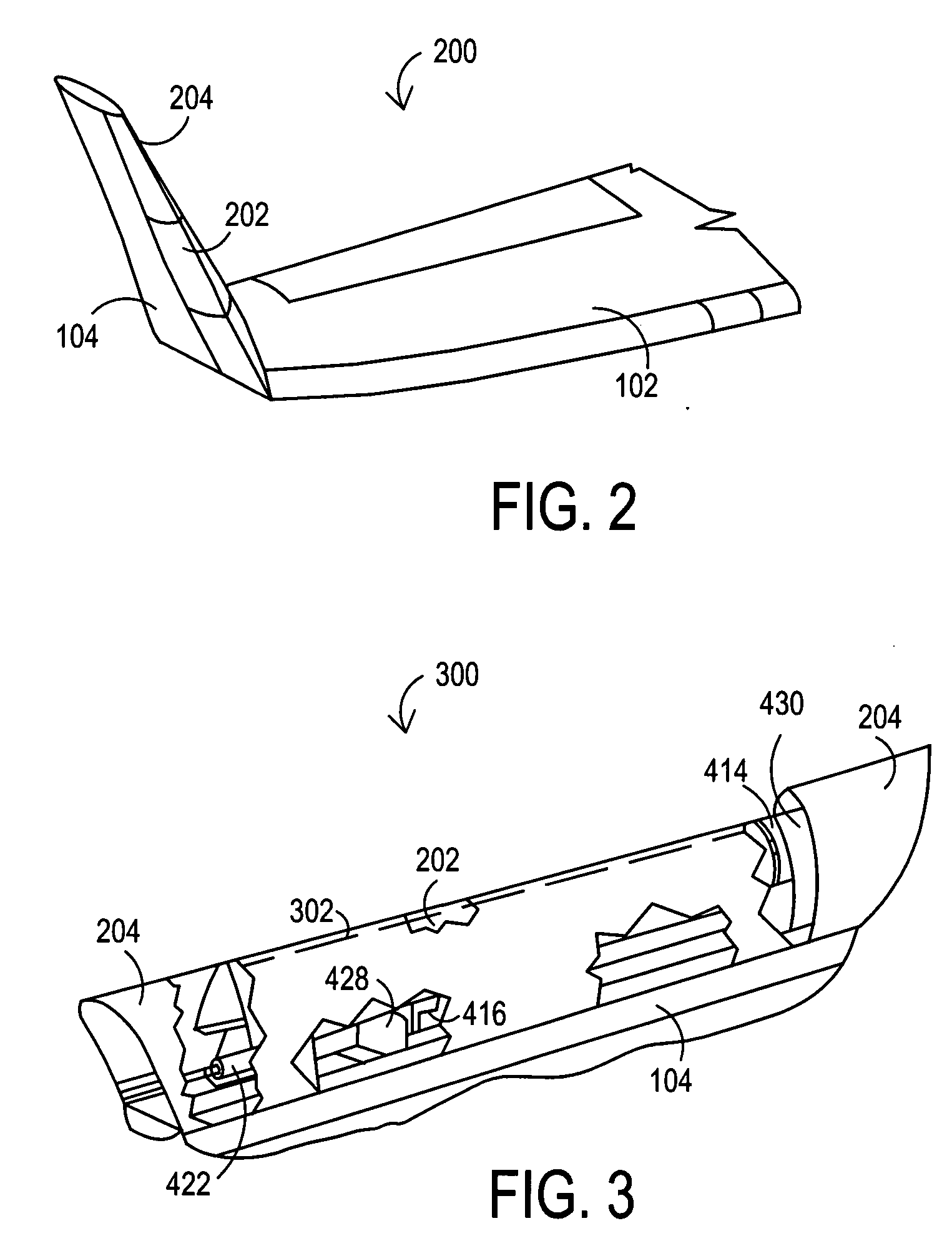Very high frequency line of sight winglet antenna
a line of sight and antenna technology, applied in the field of very high frequency line of sight antennas, can solve the problems of altering or degrading the aerodynamic characteristics of the aircraft, altering the cosmetic appearance of the aircraft, and current art aircraft antennas having co-location interference problems with other radios
- Summary
- Abstract
- Description
- Claims
- Application Information
AI Technical Summary
Benefits of technology
Problems solved by technology
Method used
Image
Examples
Embodiment Construction
[0012]The systems and methods described herein provide a line of sight antenna supported by an aircraft wing with an upturned winglet or similar vertical member. In one implementation, an antenna is supported within a cutaway aperture in a conductive winglet or similar vertical member of an aircraft wing such that the antenna remains exposed to the line of sight transmissions. In addition, a non-conductive covering for the aperture can be used to improve the aerodynamic performance and / or cosmetic look of the aircraft wing. Further, the antenna could be coupled to the outside of the non-conductive covering if desired. The line of site winglet antenna will now be more fully described with respect to the drawings.
[0013]FIG. 1 shows an aircraft embodiment 100 including an aircraft having a wing with an upturned terminal winglets at the ends of the aircraft wings. As depicted, the aircraft 101 has wings 102 with upturned winglets 104 that can be used to support a high frequency line of ...
PUM
 Login to View More
Login to View More Abstract
Description
Claims
Application Information
 Login to View More
Login to View More - R&D
- Intellectual Property
- Life Sciences
- Materials
- Tech Scout
- Unparalleled Data Quality
- Higher Quality Content
- 60% Fewer Hallucinations
Browse by: Latest US Patents, China's latest patents, Technical Efficacy Thesaurus, Application Domain, Technology Topic, Popular Technical Reports.
© 2025 PatSnap. All rights reserved.Legal|Privacy policy|Modern Slavery Act Transparency Statement|Sitemap|About US| Contact US: help@patsnap.com



